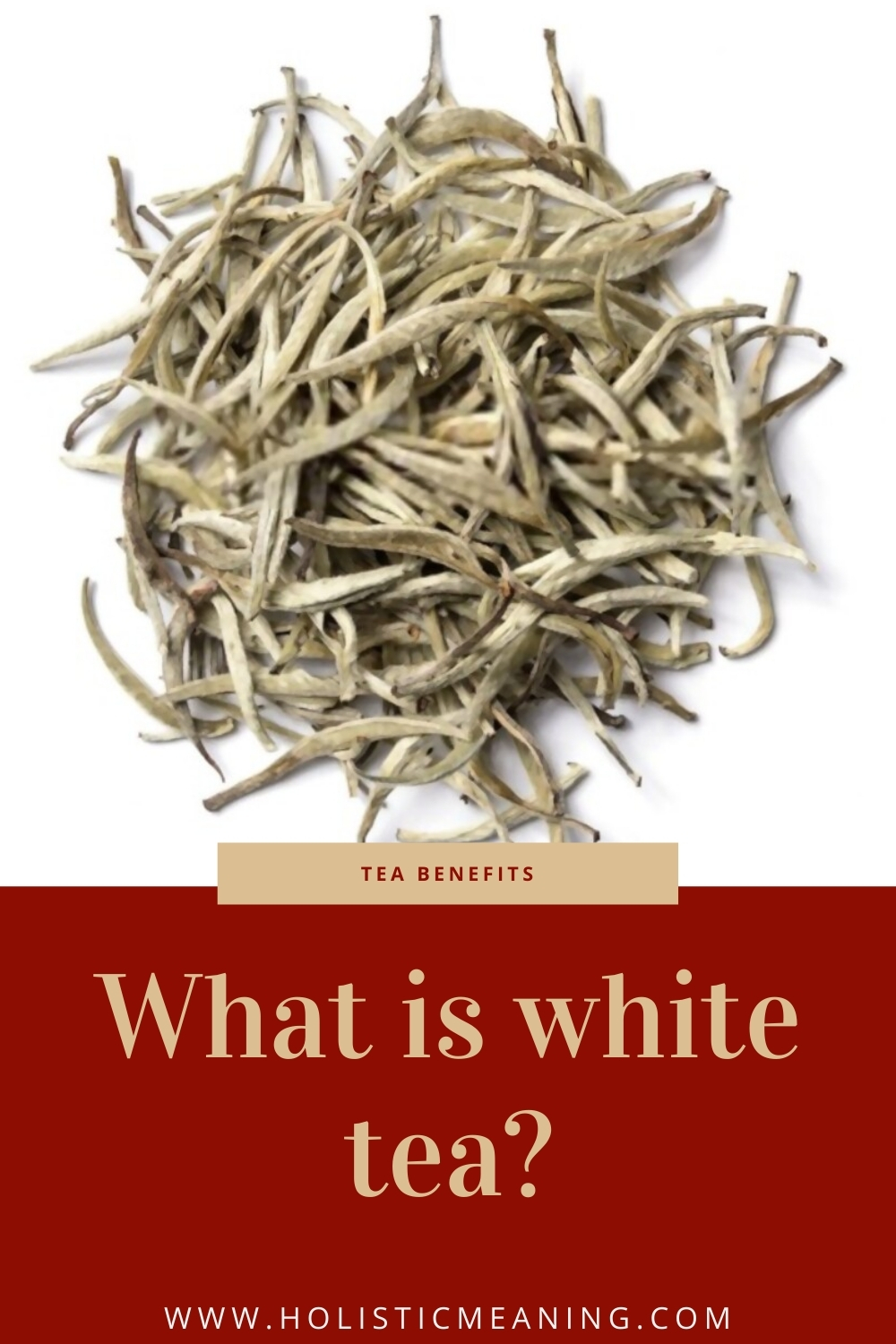Topic: What is white tea?

White tea is a tea known for its delicate and subtle flavor. It stands out for the naturalness and simplicity, which consists of its collection and drying.
White tea has centuries of history in China; in some times, it was the drink of emperors and nobility.
This tea is less well known in the West than varieties such as black or green, but it will undoubtedly dazzle the senses of those looking to expand their knowledge of the world of tea. This guide is for them.
White tea is a tea obtained from the leaves of Camellia sinensis, the tea plant; the same from which black, green, or oolong teas are obtained.
The concept behind the name white tea has nothing to do with its color but with its manufacturing process. White teas are the least processed of all the tea families: the leaves are harvested and dried.
This has nothing to do with a color change but keeping the factors that affect the taste and health properties of white tea unaltered and original.
What Is White Tea Good For?
White tea is credited with health benefits such as aiding weight loss, reducing osteoporosis symptoms, or promoting skincare.
Another element that defines what white tea is is the type of leaves used. During its production, the tea plant buds are selected and harvested before they are fully open and become mature leaves. These are still covered in tiny white “hairs,” which can often be seen in the infusions of higher quality teas.
Its minimal production process and the delicacy of the buds and leaves used to result in a tea considered one of the most delicate and fresh in the world. Its flavors are characterized by being milder than most green and black teas. White teas offer notes of floral flavors and a smooth finish. They may also include citrus, honey, vanilla, peach, melon, and apricot—light to medium-bodied.
White tea is produced mainly in Fujian’s Chinese province, although there are also producers in India, Nepal, Thailand, and Sri Lanka.
History of White Tea
White tea can be considered the earliest form of tea consumed in China since the first method that its inhabitants used to store tea had to be based on the same principles of elaboration.
The first white tea seems to originate during the Tang dynasty (618 – 907). In Imperial China, the consumption of tea was a vital part of the culture.
Each year, the Emperor’s subjects were required to pay a tribute, which was often paid in tea. However, this tea could not be just any tea. Only the rarest and highest quality teas were accepted as tributes. Only the tea produced from the youngest and most delicate shoots of the finest plants was worthy of presentation to the Emperor.
Making white tea was refined in the later Song dynasty (960-1269), and the drink became popular despite continuing to be reserved primarily for the nobility. During the reign of Emperor Huizong, The Treaty of Tea was published, a text documenting the traditional tea ceremony in Imperial China.
The Emperor was a great connoisseur and lover of tea, and his treatise is a historical piece that helped establish a culture around the world of tea. The first explicit mention of white tea ( Bai Cha ), an unprocessed green tea that the Emperor enjoyed, appears in this document.
The production of white tea similar to the one we know today began in the 17th century in Fujian province, China. The tea plants in this area stood out for their large and beautiful shoots that were used to make loose leaf white tea, not compressed or powdered as before.
At that time, loose leaf white tea was difficult to market outside the area. Due to its minimal processing, the delicate nature of the tea made it difficult to export.
Once better production and storage methods were developed, harvesting white tea became accessible to many other world regions. However, it was not until after the 19th century that white tea began to be exported to the West.
White tea varieties
All varieties of white tea have mild and delicate flavors in common. However, each of them has its character with perceptible nuances for expert palates.
Silver Needle White Tea ( Bai Hao Yin Zhen )
The Silver Needle, or Silver Needle, is undoubtedly the most famous white tea. It is a highly valued tea with usually high prices.
It is grown in Fujian’s Chinese province and is known as one of the most famous and typical teas in China.
To find out what it gets its name from, take a look at the product. This tea is obtained from the buds (and only the buds) of tea plants of the Da Bai variety, Great White. These are famous for their large and beautiful buds, which once dry take on grayish tones.
Silver Needle tea is harvested at a particular time, between the end of March and the beginning of April, when the first shoots of the year are born. These are collected before opening and becoming mature leaf.
The resulting infusion is pale yellow and contains the typical hairs from the tea buds. It is often said that Baihao Yinzhen smells like freshly cut hay, and its taste is described as sweet, vegetal, and delicate.
White Tea White Peony ( Bai Mu Dan or Pai Mu Tan )
This tea is more affordable than Silver Needle tea and provides very high quality. It can be said that the two are part of the group of the best known and most consumed white teas.
The White Peony is made from the most delicate buds of the tea plant. In this case, harvesting is restricted to the unopened central shoot and the first two newly opened young leaves. The inclusion of young leaves reinforces the infusion’s flavor and makes it less subtle than that of Silver Needle tea.
Bai Mudan is preferred by fans of white teas that favor more elaborate flavors. Its flavor profile is more intense, without losing sight that it is a white tea, and it has floral notes such as peony and chrysanthemum.
Darjeeling White Tea
This tea is peculiar in the group of white teas since it is produced in the Indian region of Darjeeling, at the foot of the imposing Himalayas.
This white tea is quite similar to its Chinese cousins, but you can’t deny its provenance. The climate and the land give the infusion of this tea the nuances of muscat and walnut so characteristic of any tea grown in Darjeeling.
Long Life Eyebrow White Tea ( Shou Mei )
The shoumei is a white tea with an intense flavor; it is often compared to lighter oolong teas.
Its cultivation is mainly carried out in Fujian province and Guangxi province in China. Its harvest is later than that of Bai Mudan; this causes more intense, toasted, and delicately earthy flavors and darker colors in the infusion.
Tribute Eyebrow White Tea ( Gong Mei )
The Gong Mei is obtained from a specific variety of the tea bush ( Camellia sinensis ). On the other hand, its manufacturing process is slightly different from the traditional one for white teas. This combination produces an unusual white tea.
Its infusion is clear, orange, and gold in color and provides a soft and velvety flavor with cheerful floral touches.
How to make an excellent white tea
White tea is prepared with water at a temperature around 85ºC. Be careful; the temperature is crucial.
If the recommended is exceeded, the tea becomes bitter, and the most delicate flavors disappear. On the other hand, antioxidants are affected at temperatures close to the boiling point, the tea becomes astringent, and its best qualities are lost. To avoid overdoing it, bring the water to a boil and let it rest for a couple of minutes before pouring it in.
Use between 2 and 2.5 grams of tea per cup (about 1.5 teaspoons).
The recommended infusion time is 4 minutes, although some specialists decide to increase this time to 10 minutes in the first infusion to allow the most delicate aromas to develop. Some manufacturers of varieties such as Silver Needle recommend times of 15 minutes. Look for specific instructions for your variety on the tea package.
Recommended Article:
What Is The Best Diet Plan To Follow
How To Gain Weight On A Plant Based Diet
How Long Does It Take To Restore Vitamin D Levels
Does Birth Control Pill Make Your Breasts Bigger



